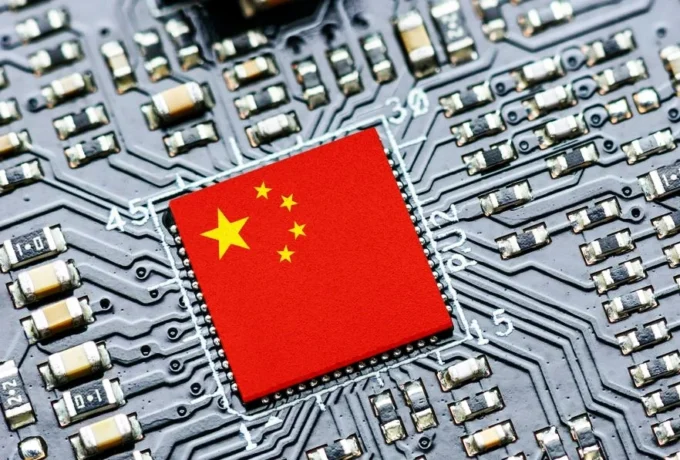Today’s topic is the japan china gallium semiconductor battery warning. As China and Japan clash over a vital gallium supply that affects the world’s semiconductor and battery manufacturing industries, tensions increase.
Introduction
Gallium has become an important battlefield element in japan china gallium semiconductor battery warning growing tech competition. The fields of semiconductors, optoelectronics, and sophisticated battery technologies—all crucial to digital supremacy, energy sustainability, and national security—rely heavily on this rare and soft metal. China’s recent export control warnings over shipments of gallium have rocked global supply chains, particularly impacting Japan’s battery and semiconductor industries.
Why Japan China Gallium Semiconductor Battery Warning Is Important and What It Is
The silvery metal gallium (Ga) is mostly extracted as a byproduct of the production of zinc and aluminum. Gallium arsenide (GaAs) and gallium nitride (GaN)-based semiconductors benefit greatly from their remarkable electron mobility and thermal stability. These substances are frequently utilized in:
- Mobile communication in 5G and 6G
- Radar systems of military quality
- Batteries and electric cars (EVs)
- Solar panels and LEDs
- Satellite communications at high frequencies
Japan china gallium semiconductor battery warning is a strategic resource that fuels both geopolitical conflicts and next-generation innovation, making it more than just a commodity.
China’s Gallium Export Limitations: A Change in Strategy
China, which produces more than 90% of the world’s supply of gallium, announced new export licensing requirements for both gallium and germanium in the middle of 2023. This action, which was taken soon after Western countries implemented sanctions pertaining to semiconductors, made it abundantly evident that China is prepared to use vital minerals into weapons in the tech race.
One of China’s largest importers of gallium, Japan, is now dealing with supply issues that could halt the manufacturing of:
- Wafers made of gallium are utilized in power electronics.
- Photonics and laser diodes for AI chips
- Technologies for EV and hybrid batteries
In addition to driving up commodity prices, these constraints have compelled Japan to reevaluate its national stockpiling regulations and supply chain dependencies.
Japan’s Reaction: Internal Development and Diversification
Japan has escalated its drive for gallium independence in response to these mounting risks by:
1. Purchasing Gallium from Other Nations
Japan is currently looking for substitute vendors from:
-
- Germany, one of the few countries capable of processing
- Korea
- Kazakhstan
- America
However, these sources have limited production capacities, and creating new supply networks will take years.
2. Investing in Recovery and Recycling
Japan is making significant investments in the recovery of gallium from electronic waste and urban mining. Japanese companies are working to establish a circular economy for essential metals by concentrating on recycling LEDs, solar panels, and industrial trash.
3. Strengthening R&D and Domestic Refinement
In order to provide gallium alternatives and alloy improvements, Japanese companies such as Sumitomo Electric, Furukawa Electric, and Mitsubishi Chemical are increasing their domestic gallium refinement and making research and development investments. Through collaborations and funding, government-backed initiatives like METI’s Critical Material Strategy seek to support these efforts.
Effect on the Battery and Japan China Gallium Semiconductor Battery Warning Industries
The Semiconductor Sector
For high-performance chips, particularly in automotive and defense applications, Japanese semiconductor manufacturers Sony Semiconductor Solutions, Rohm Co., and Renesas Electronics rely significantly on gallium-based compounds. The shortage of supplies has resulted in:
- Increasing the cost of procurement
- Postponed production schedules
- Consider silicon carbide (SiC) as a substitute, even though it’s not always a 1:1 match.
Technologies for Japan China Gallium Semiconductor Battery Warning
Japan china gallium semiconductor battery warning materials improve thermal stability, battery life, and charging efficiency, especially in advanced lithium-ion and solid-state batteries. Japan’s dominance in the global EV market may be impacted by a shortage, which would force manufacturers like Hitachi, Panasonic, and Toyota to look into alternate chemistries.
Strategic Stockpiling and Security Concerns
Japan is taking a national security-focused approach to vital mineral supplies in light of growing geopolitical instability:
- Gallium reserves are being stored under the auspices of JOGMEC (Japan Oil, Gas and Metals National Corporation).
- Strategic partnerships with partners in the Indo-Pacific
- strengthening trade pacts with the US and the EU.
Gallium is only the tip of the iceberg, as there is concern that future escalations may target other vital minerals like cobalt, tungsten, and rare earths.
The worldwide ripple effect at Japan China Gallium Semiconductor Battery Warning
China’s action is not unique. It is provoking:
- Strategic mineral reserves will be established by the United States.
- The EU will put the Critical Raw Materials Acts into effect.
- Southeast Asia will be used by South Korea to diversify its supply routes.
Japan is in the vanguard, striking a balance between national resilience and technical advancement, and it may be used as an example by any country that depends on strategic material imports.
Technology Prognosis: Japan China Gallium Semiconductor Battery Warning and Beyond
The need for gallium is undoubtedly going to grow as technology develops. New applications consist of:
- The use of quantum computing
- The use of hypersonic missiles
- Solar arrays of space quality
- Future-oriented AI chipsets
Countries like Japan need to take the lead in manufacturing sovereignty, supply chain logistics driven by AI, and material innovation if they want to remain competitive.
FAQs
- What is the significance of gallium in contemporary electronics?
High-frequency and high-temperature applications such as 5G, LEDs, and EVs benefit greatly from gallium’s ability to improve semiconductor performance and efficiency.
- What is China’s worldwide gallium control?
China has considerable influence over the global electronics supply chain because it produces 80–90% of the world’s gallium.
- What led to China’s export limits on gallium?
Geopolitical issues, especially the United States’ limitations on AI chips going to China, prompted the restrictions. Many people believe that China is responding strategically.
- Is it possible for Japan to locate other sources of gallium?
Although it won’t happen right away, Japan is looking into alternate suppliers and making investments in domestic manufacturing and recycling programs.
- How will shortages of gallium impact commonplace items?
Maybe. If supply chains for gallium continue to be unstable, products like smartphones, EVs, and 5G gadgets can see delays or price increases.
Conclusion
Over-reliance on a single source for mission-critical materials is a deeper vulnerability that is shown by japan china gallium semiconductor battery warning dilemma. The proactive steps taken by Japan may provide a model for creating robust, varied, and sustainable supply chains that unwaveringly support technical leadership.















Leave a comment